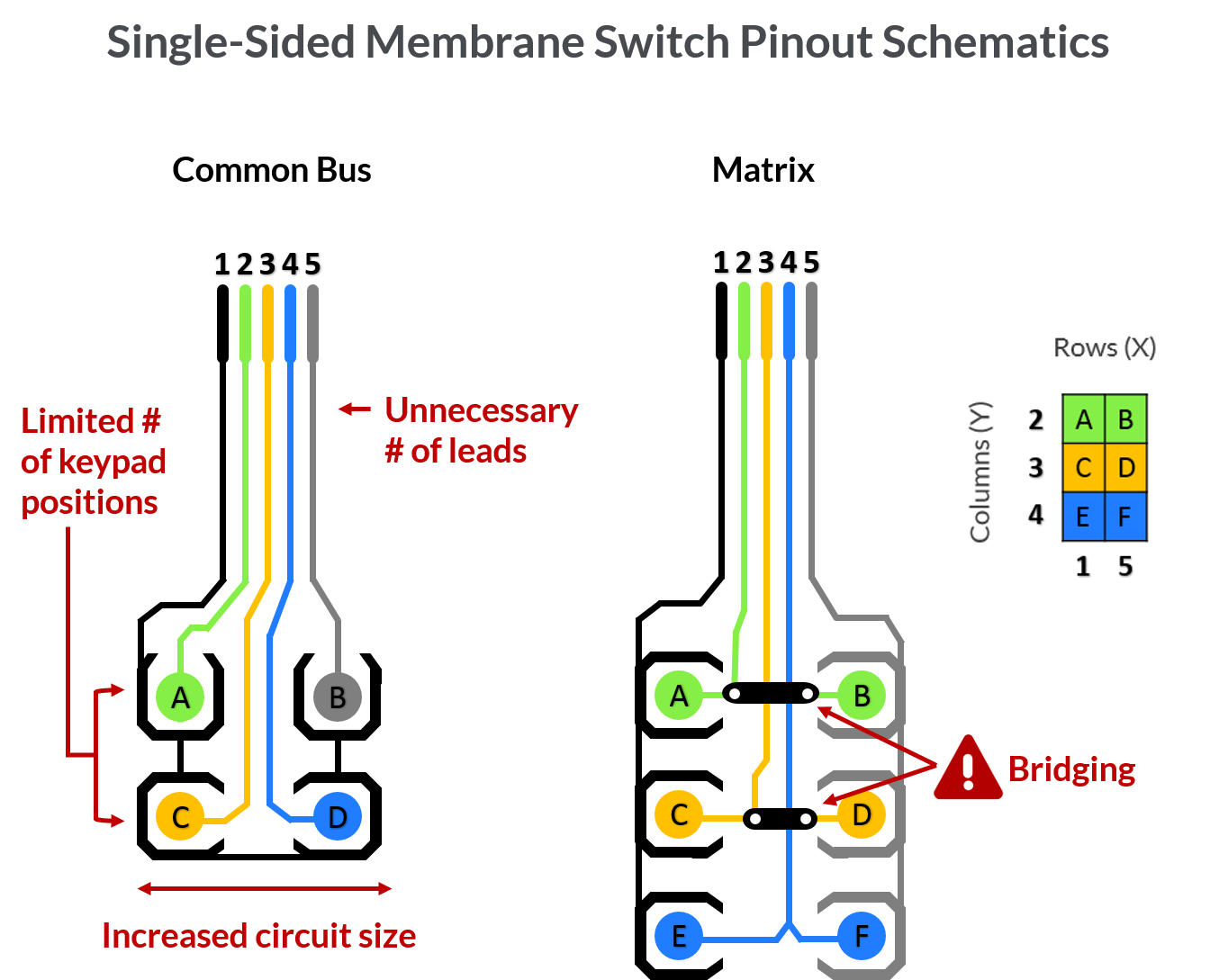Just How Membrane Layer Changes Contribute to the Sturdiness of Electronic Control Panels
Membrane buttons play a critical duty in enhancing the longevity of digital control panels, largely through their multi-layered building which offers efficient defense against environmental factors such as moisture and dust. The absence of relocating parts substantially reduces the likelihood of mechanical failures, making membrane layer switches over perfect for demanding applications.
Definition of Membrane Layer Buttons

Membrane switches are made to be thin and light-weight, making them appropriate for applications where space is limited. They can be manufactured in different shapes, dimensions, and shades, supplying flexibility in layout that fulfills visual and useful demands. Furthermore, membrane layer switches can incorporate different technologies, such as tactile responses and LED indicators, boosting individual experience.
As a result of their building and construction, membrane layer switches are usually resistant to dirt, wetness, and general wear, adding to their resilience in demanding settings. Their seamless layout not just facilitates very easy cleaning however additionally decreases the threat of mechanical failure, making them a preferred selection for suppliers looking for trusted individual interfaces in their digital control panels.
Protection Versus Ecological Aspects
The style of membrane layer switches inherently offers a level of defense against different environmental elements, which is crucial for maintaining functionality in tough conditions - Membrane Switch. These switches are commonly constructed with layers of versatile products that secure inner elements from dampness, dust, and contaminants. By encapsulating the wiring, membrane layer switches over minimize the risk of brief circuits and deterioration, which can dramatically hinder performance
Moreover, making use of robust adhesives and sealers throughout manufacturing boosts their resistance to ecological challenges. Membrane layer buttons can endure direct exposure to chemicals and solvents, making them appropriate for markets such as food processing and health care, where health and sanitation are extremely important. Their seamless surface area layout additionally protects against the accumulation of dirt and bacteria, assisting in less complicated cleansing and maintenance.
Temperature variations are another ecological worry, and membrane buttons are crafted to work properly throughout a wide variety of temperatures (Membrane Switch). This flexibility ensures that control board remain functional in different setups, from industrial atmospheres to customer electronic devices
Effect On Individual Interaction
Customer communication with electronic control panels is dramatically influenced by the design and functionality of membrane switches. These buttons offer a tactile interface that boosts the total individual experience, enabling user-friendly navigating and control. Their responsive nature makes certain that individuals obtain instant feedback upon activation, which is critical for jobs needing precision and efficiency.
Moreover, the smooth surface of membrane layer switches helps with very easy cleaning and maintenance, advertising individual self-confidence in the reliability of the interface. This sanitation is particularly essential in see this page atmospheres where health is critical, such as medical or food handling settings. In addition, the compact and lightweight design of membrane changes contributes to the aesthetic appeal of control panels, encouraging customer engagement with a modern-day and streamlined look.
Furthermore, the combination of visual aspects, such as published symbols and backlighting, aids customers promptly determine functions, lowering the learning contour related to new tools. Therefore, individuals can run tools much more effectively, leading to enhanced productivity and complete satisfaction. In summary, membrane buttons play a critical duty in improving user communication by integrating performance, looks, and ease of usage, ultimately resulting in boosted operational performance.
Style Flexibility and Modification
Style flexibility and modification are vital aspects of membrane switches, enabling producers to tailor digital control board to particular applications and customer demands. This flexibility permits the combination of different design components, such as shades, graphics, and structures, which can improve the visual allure and user engagement of the control panel.
Membrane layer switches can be customized in size and form, fitting a vast site web array of gadgets and applications, from commercial equipment to consumer electronic devices. This convenience makes sure that makers can develop instinctive user interfaces that align with individual assumptions and operational requirements. Additionally, the ability to integrate one-of-a-kind functions such as backlighting or tactile responses even more boosts usability, enabling a much more interactive experience.
Additionally, the production process for membrane layer switches over sustains the rapid prototyping of designs, enabling suppliers to repeat and refine their ideas quickly. This ability not just accelerates the advancement timeline but additionally makes certain that the final product fulfills particular functional and visual criteria.

Cost-Effectiveness and Durability
Cost-effectiveness and long life are substantial advantages of membrane switches, making them an attractive option for makers and end-users alike. These switches are generally cheaper to produce than traditional mechanical switches, primarily due to their streamlined manufacturing processes and the minimized number of components required. This expense helpful resources advantage prolongs not only to preliminary manufacturing however also to lasting operational costs, as membrane layer buttons often require much less maintenance and have a reduced failing price.
Moreover, the long life of membrane layer switches over adds to their general value. Created from sturdy materials, they are immune to environmental aspects such as wetness, dirt, and chemicals, which can bring about premature wear in various other button kinds. The lack of moving components reduces mechanical failing, enabling membrane switches to preserve capability over prolonged durations.
This resilience is particularly useful in applications needing regular performance under requiring conditions, such as clinical tools and commercial tools. Inevitably, the combination of cost-effectiveness and longevity makes membrane layer switches over an economically viable choice for suppliers, providing dependable options that stand up to the test of time while maximizing monetary considerations.
Conclusion
In final thought, membrane buttons considerably enhance the toughness of digital control panels with their durable building and protective features - Membrane Switch. On the whole, membrane switches represent a reliable and economical choice for boosting the longevity and capability of digital control systems.